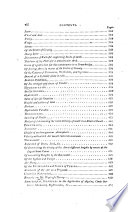 | Isaac Dalby - Mathematics - 1806 - 526 pages
...term m the root : VOL. I I. K Subtract the cube of the root already found from the given quantity, and divide the first term of the remainder by 3 times the square of the first term, as before, and the quotient is the third term in the root : Subtract the cube of this augmented root... | |
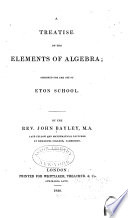 | John Bayley (fellow of Emmanuel College, Cambridge.) - Algebra - 1830 - 428 pages
...term in the root; subtract * * * * the cube of the root thus found from the given quantity. Again, divide the first term of the remainder by 3 times the square of the first term, as before, and the quotient is the third term in the root. EXAMPLE. Find the cube root of a2 + 3агс... | |
 | Charles Davies - Algebra - 1835 - 378 pages
...R. If then, we form the cube of the two terms of the root already found, and subtract it from N, and divide the first term of the remainder by 3 times the square of the first term of R, the quotient will be the third term of the root. Therefore, having arranged the terms of JV, we... | |
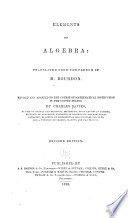 | Algebra - 1838 - 372 pages
...R. If then, we form the cube of the two terms of the root already found, and subtract it from N, and divide the first term of the remainder by 3 times the square of the first term of R, the quotient will be the third term of the root. Therefore, having arranged the terms of N, we have... | |
 | Thomas Grainger Hall - 1840 - 266 pages
...3ab2 + b3. Now a is found from a3; -.• „/a3 = a; and to find b we must divide 3a'b, by Зa2, or by 3 times the square of the first term of the root, also since 3a'b + 3ab' + b° = (Зa2 + 3ab + 62)6 ; if we write 3a' + 3ab + b2 for a divisor and multiply... | |
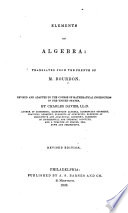 | Charles Davies - Algebra - 1842 - 368 pages
...If then, we form the cube of the two terms of the roo,t already found, and subtract it from N, and divide the first term of the remainder by 3 times the square of the first term of R, the quotient will be the third term of the root. Therefore, having arranged RULE. I. Extract the... | |
 | Charles Davies - Algebra - 1845 - 382 pages
...that if we form the cube of the two terms of the root found as above, and subtract it from N, and then divide the first term of the remainder by 3 times the square of the first term of R, the quotient will be the third term of the root. Therefore, having arranged the terms of .ZV, with... | |
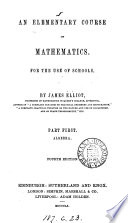 | James Elliot - 1860 - 252 pages
...second term of the root will be found by dividing the second term of the given power, vix. ± Zx2y, by 3 times the square of the first term of the root, the terms of the given quantity having, of course, been arranged according to the powers of the letters.... | |
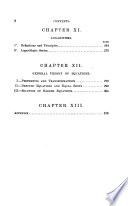 | William Guy Peck - Algebra - 1875 - 348 pages
...the root. III. Subtract the cube of the first two terms of the root from the given polynomial, and divide the first term of the remainder by 3 times the square of the first term of the root; the quotient will be tlie third term of the root. IV- Continue this operation till a remainder is found... | |
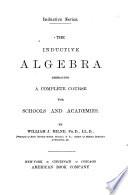 | William James Milne - Algebra - 1881 - 360 pages
...ivrite the result as the first term of the quotient, and subtract its cube from the given polynomial. * Divide the first term of the remainder by 3 times the square of the root already found, as a trial divisor, and the quotient ivitt be the next term of the root. Add to... | |
| |